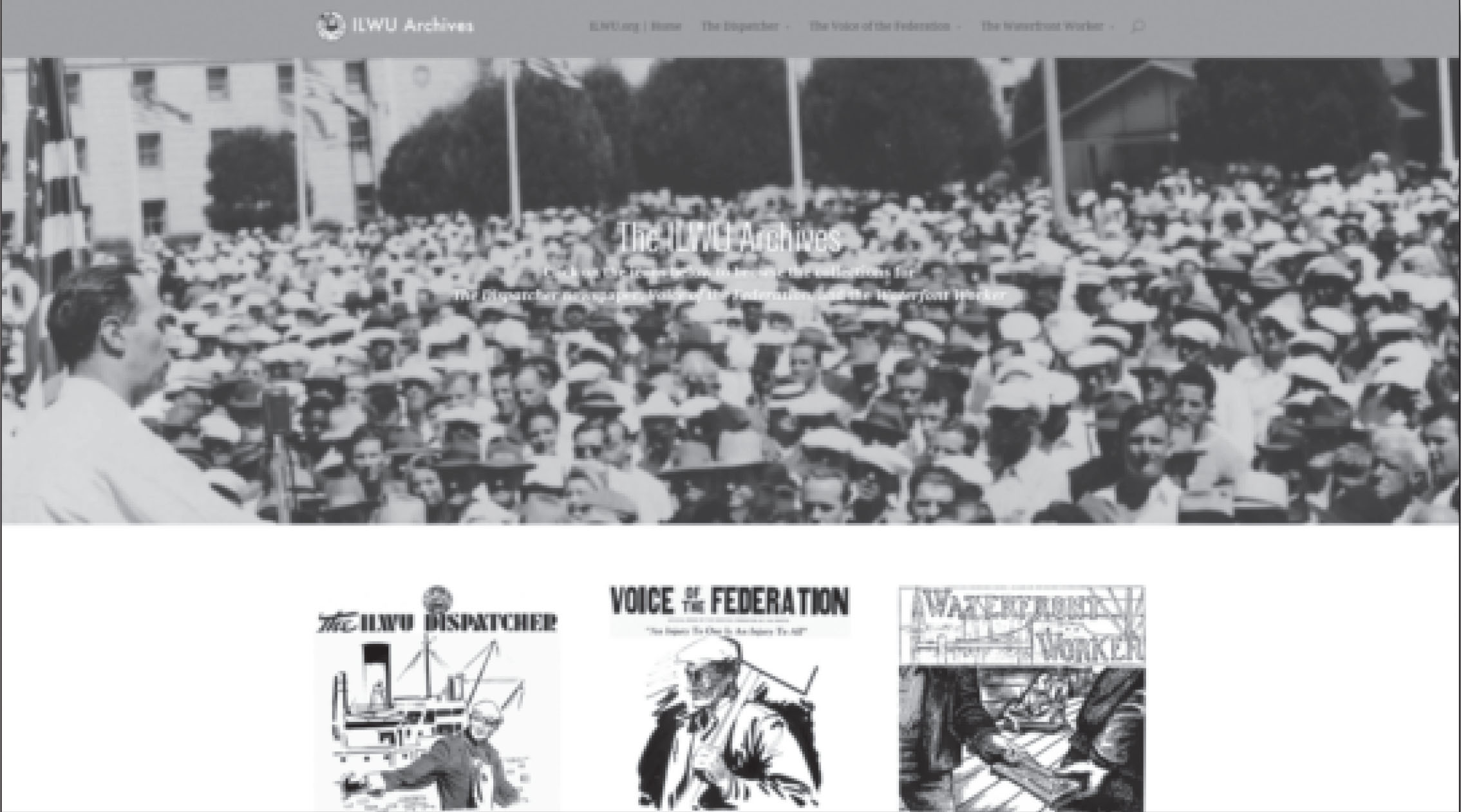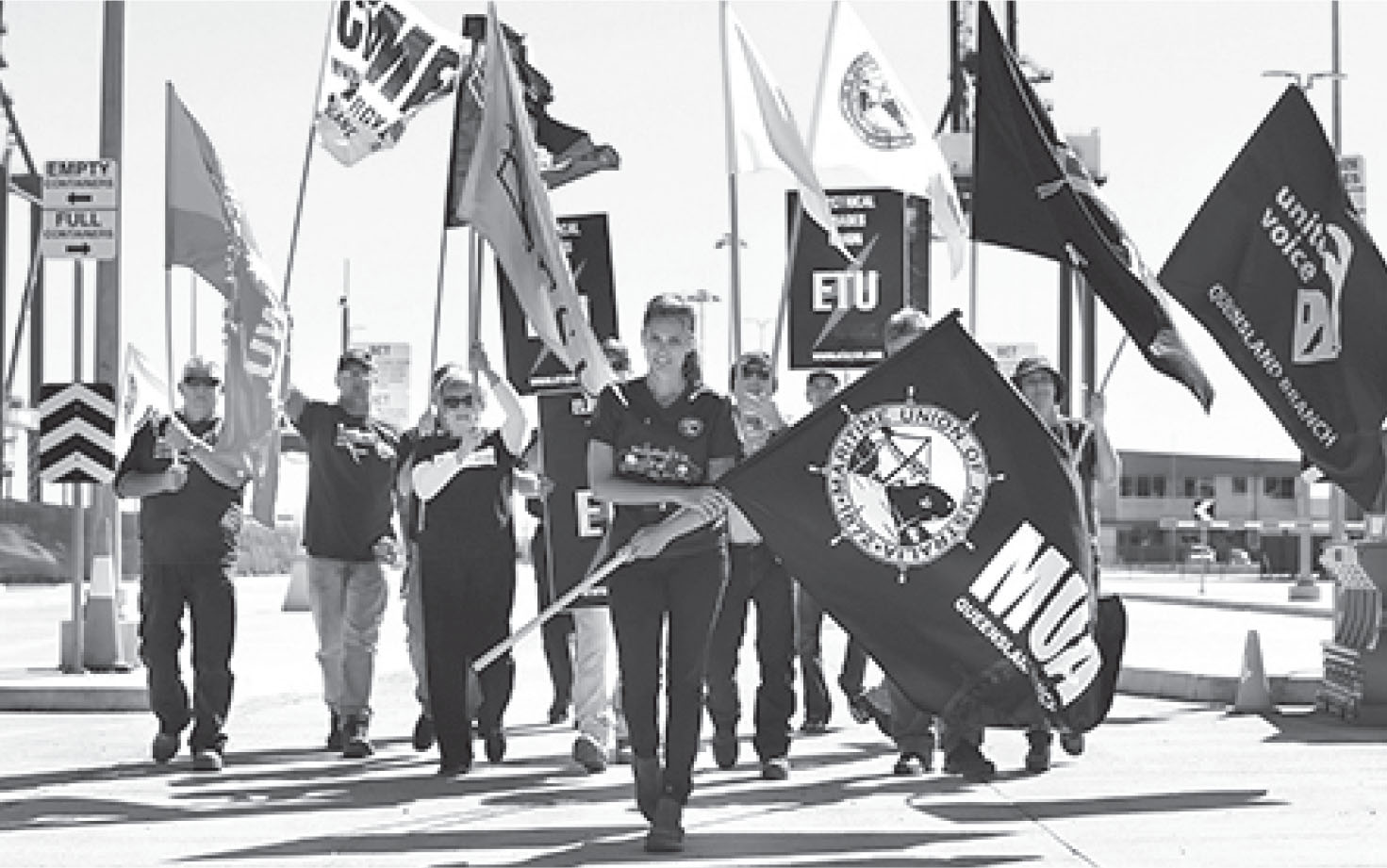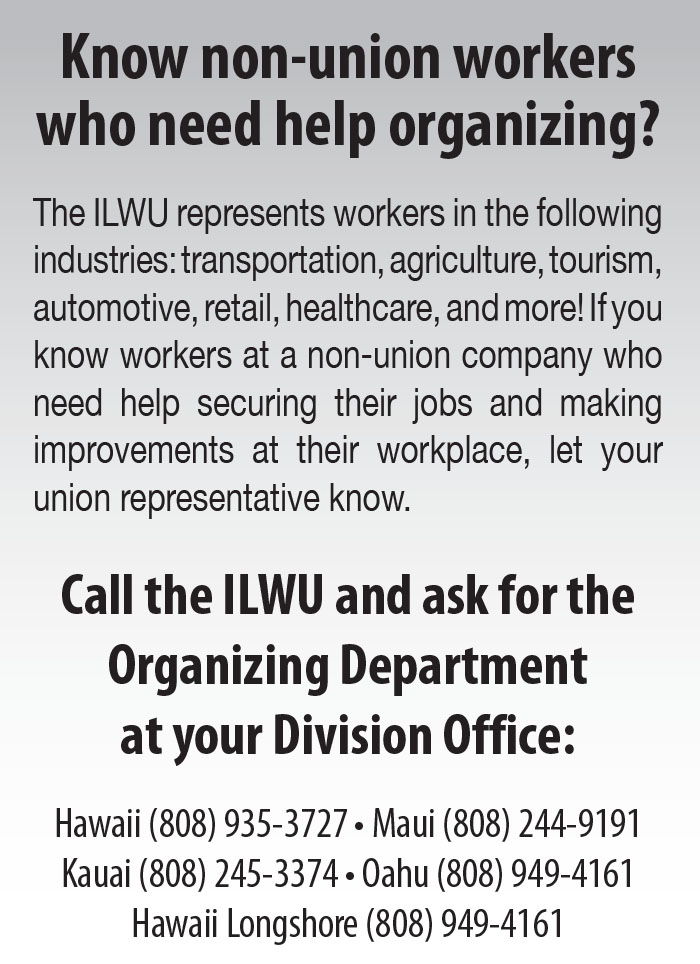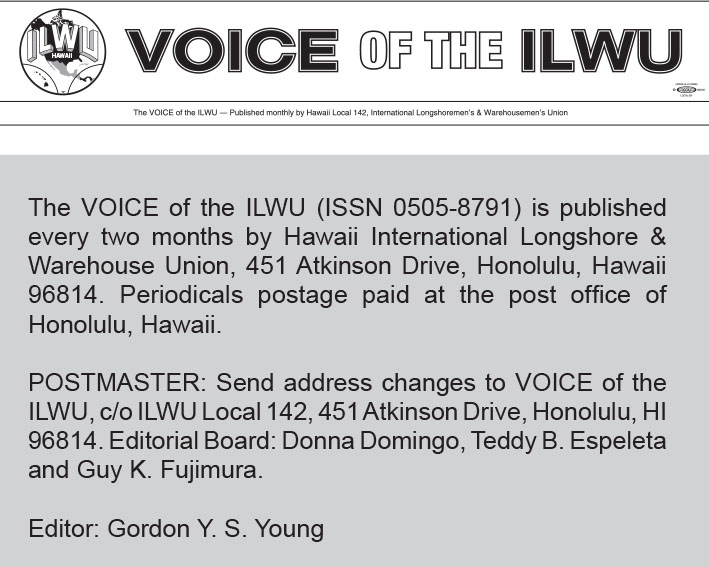
The ILWU library is now online after a mass digitization project. The new site: http://archive.ilwu.org hosts digitized issues of The Dispatcher plus two other ILWU-related publications: the Voice of the Federation, and the Waterfront Worker. The site contains close to 2,000 documents, plus a handful of selected images from the ILWU Library’s collection of over 20,000 photographs.
Each of the papers featured on the new site chronicles the union’s history during important phases in its organization. The first of the publications, The Waterfront Worker, began in the months before the 1934 strike. An anonymous group of rank and file longshore workers closely associated with Harry Bridges produced the simple, mimeographed newsletter and disseminated it to workers in secret by stashing it aboard ships to reach ports throughout the coast. Featuring frank language and simple line drawings, it helped inform people of key issues in the unionization struggle.
The second publication, the Voice of the Federation began shortly after the 1934 strike. In the strike’s aftermath, longshore workers banded together with other unionized maritime workers to form a group called the Maritime Federation of the Pacific. This organization sought to strengthen union recognition throughout the maritime trades and to expand many of the gains that longshore workers achieved in the strike to other unions. The Voice of the Federation, the Maritime Federation’s organ, carried news from all the unions involved in the consortium, including the Pacific Coast District of the International Longshoremen’s Association, later, the ILWU. The Maritime Federation ILWU Library launches new website succeeded in expanding the 1934 gains to other unions in subsequent actions, but the organization was short-lived due to internal conflicts among its member unions.
With the demise of the Maritime Federation of the Pacific, the ILWU leadership realized the need for a paper of its own. At the end of 1942, the union began publishing The Dispatcher. The ILWU was less than a decade old at the time of The Dispatcher’s first issue, but the union’s need to establish its own means of communications was clear. The ILWU faced rapid changes: its ranks were expanding and growing more diverse as millions of Americans moved out to the western states to work in wartime industries; meanwhile, the union was under continued attack from employers, and ILWU President Harry Bridges faced ongoing deportation threats. The Dispatcher provided a trustworthy source of worker-focused reporting to ILWU members, covering news from the locals, stories of interest to the labor movement, and featuring columns from officers.
When assembled together, these three publications cover the ILWU’s entire history from 1934 to the present. The website now offers an excellent resource for those interested in how the union addressed key issues throughout its history—from early organization opposing the brutal shape-up hiring practices before the 1934 strike to more recent struggles and victories. Although the website’s content represents only a small fraction of the material in the library, having these three pivotal publications available online greatly expands access and facilitates research on the union.
The website also helps address some of the library’s concerns over preserving original documents. Some of the earlier issues of the papers are over 80 years old, and it is difficult to balance the need for preserving them with the union’s desire to make them available to people with an interest in ILWU history. In some cases, access to the original documents must be restricted due to the fragility of the paper.
In the future, the library hopes to offer more digital content on the website.
Aussie dockers return after mass-firing
Nearly 100 dockers who were fired three months ago by Hutchison Ports Australia (HPA) will now be returning to work, according to an agreement reached November 17 between the Maritime Union of Australia (MUA) and HPA management.
One hundred and three days had elapsed since 97 workers at Brisbane and Sydney learned of their terminations via text messages and email. HPA tried to terminate the workers after boasting of plans to aggressively automate ports— without first negotiating terms and conditions with the union.
Union officials say the November 17 settlement will provide “substantial” benefits for workers who take voluntary retirement packages. Reaching those terms took several rounds of intense negotiations.l
International Transport workers Federation (ITF) President and MUA National Secretary Paddy Crumlin led the talks with HPA officials at the government’s Fair Work Commission. Crumlin said the new agreement indicated “a more functional and mature approach to industrial relations,” compared with the company’s unilateral attempt to restructure their operations three months ago.
Crumlin thanked affiliates of the ITF and IDC (International Dockworker Council) for their solidarity to help the sacked workers during the past three months.

Dare to struggle, dare to win: After learning via text and email they were being sacked, Maritime Union of Australia dockers took action and won their jobs back in a struggle over automation.


